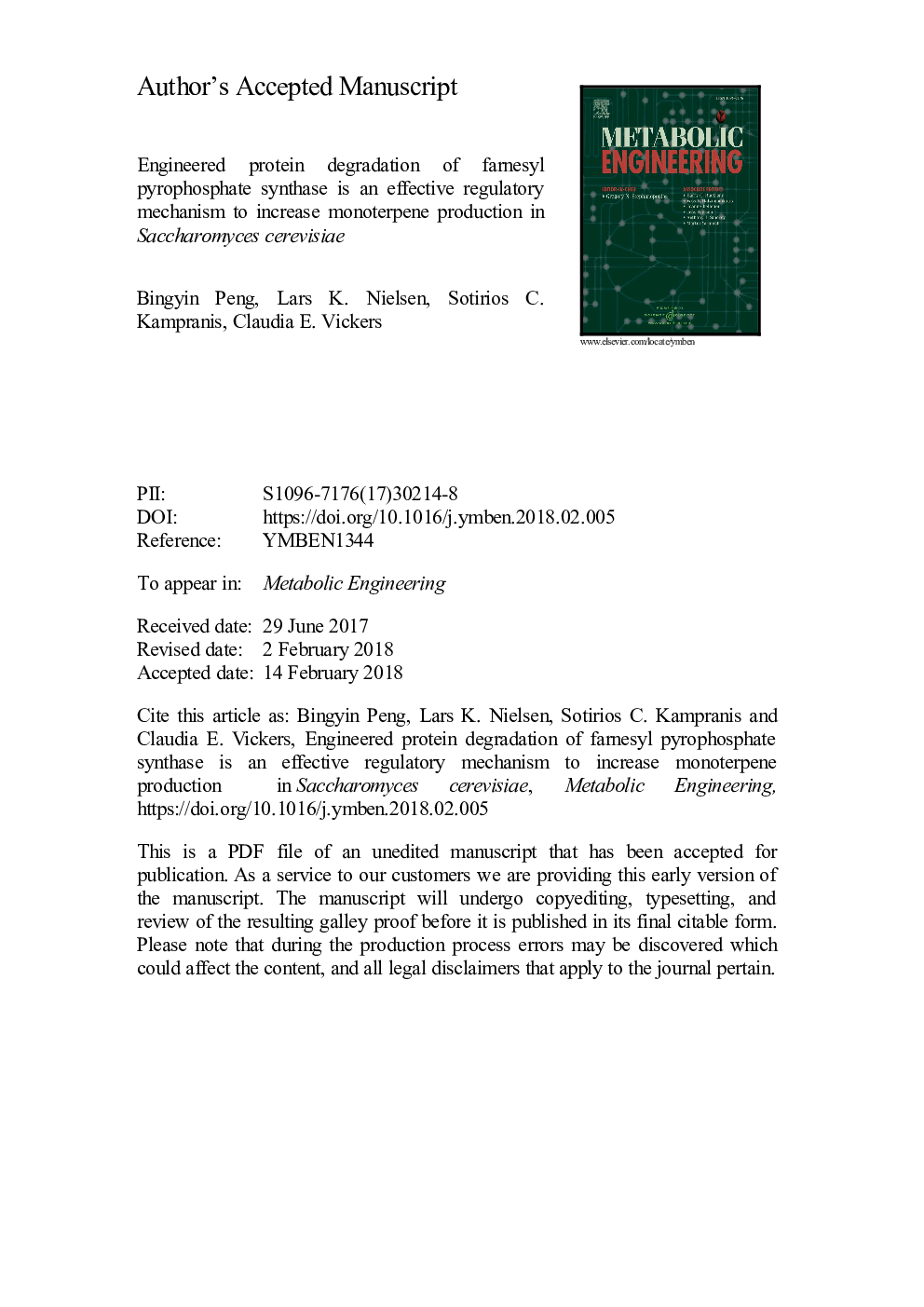| Article ID | Journal | Published Year | Pages | File Type |
|---|---|---|---|---|
| 6494068 | Metabolic Engineering | 2018 | 27 Pages |
Abstract
Monoterpene production in Saccharomyces cerevisae requires the introduction of heterologous monoterpene synthases (MTSs). The endogenous farnesyl pyrosphosphate synthase (FPPS; Erg20p) competes with MTSs for the precursor geranyl pyrophosphate (GPP), which limits the production of monoterpenes. ERG20 is an essential gene that cannot be deleted and transcriptional down-regulation of ERG20 has failed to improve monoterpene production. Here, we investigated an N-degron-dependent protein degradation strategy to down-regulate Erg20p activity. Degron tagging decreased GFP protein half-life drastically to 1â¯h (degron K3K15) or 15â¯min (degrons KN113 and KN119). Degron tagging of ERG20 was therefore paired with a sterol responsive promoter to ensure sufficient metabolic flux to essential downstream sterols despite the severe destabilisation effect of degron tagging. A dual monoterpene/sesquiterpene (linalool/nerolidol) synthase, AcNES1, was used as a reporter of intracellular GPP and FPP production. Transcription of the synthetic pathway was controlled by either constitutive or diauxie-inducible promoters. A combination of degron K3K15 and the ERG1 promoter increased linalool titre by 27-fold to 11â¯mgâ¯Lâ1 in the strain with constitutive promoter constructs, and by 17-fold to 18â¯mgâ¯Lâ1 in the strain with diauxie-inducible promoter constructs. The sesquiterpene nerolidol remained the major product in both strains. The same strategies were applied to construct a limonene-producing strain, which produced 76â¯mgâ¯Lâ1 in batch cultivation. The FPPS regulation method developed here successfully redirected metabolic flux toward monoterpene production. Examination of growth defects in various strains suggested that the intracellular FPP concentration had a significant effect on growth rate. Further strategies are required to balance intracellular production of FPP and GPP so as to maximise monoterpene production without impacting on cellular growth.
Related Topics
Physical Sciences and Engineering
Chemical Engineering
Bioengineering
Authors
Bingyin Peng, Lars K. Nielsen, Sotirios C. Kampranis, Claudia E. Vickers,
